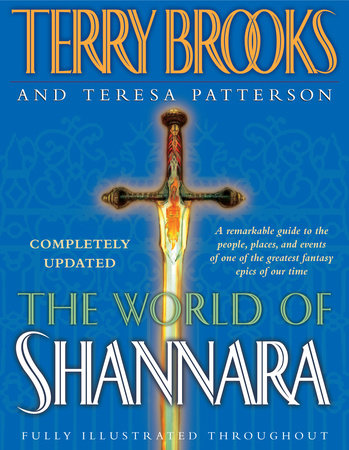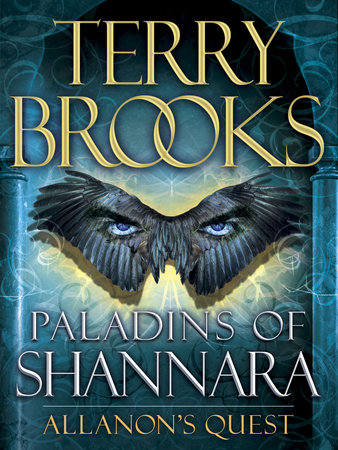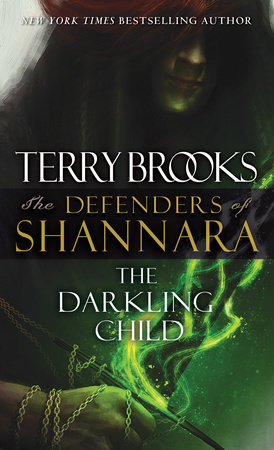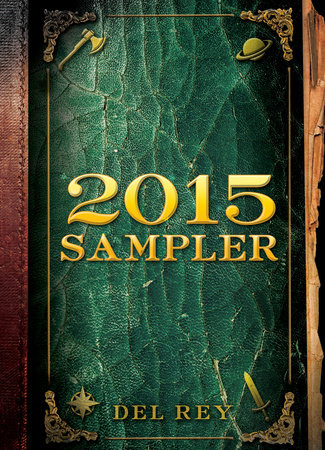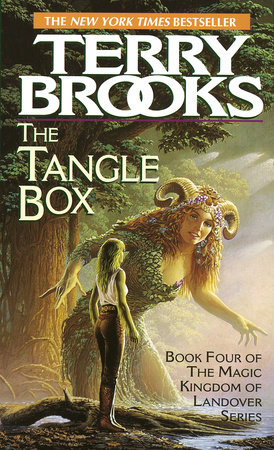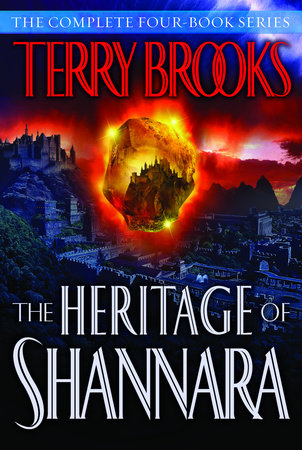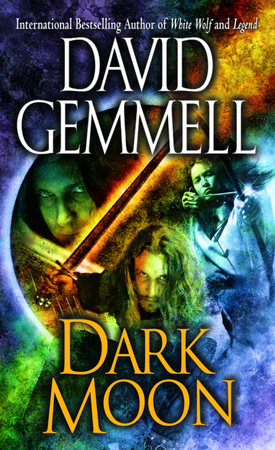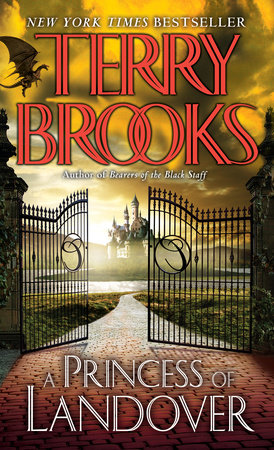An Interview with Terry Brooks
Question: Ever since the 1997 publication of Running with the Demon, I’ve been fascinated by the implied connections between the present-day world of the Word and Void series and the far-future world of the Shannara books. Now you’re making those connections explicit for the first time. How long have you been planning to write this new series, how many books will comprise it, and how long do you expect it to take you to complete?
Terry Brooks: This series could run as many as nine or ten books, and it will take at least that many years to complete it. But I intend to break it down into three different time periods with different sets of characters so that a single storyline willconclude within three years of start up.That’s my plan just now, but it is subject to change without notice.
As for prior thought on this series, I haven’t been thinking about it in explicit terms for all that long. Only about two years.
Q: Can you talk about some of those connections without giving away any spoilers? Did you always intend for the two series to be linked, or did you only gradually come to that realization? How difficult has it been to mesh the two mythologies?
TB: It was a gradual evolution in my thinking. There has always been a strong demand from readers to go back in time to the Great Wars and write something about the destruction of the old world and the beginning of the world of the Four Lands. It was never anything I wanted to do, so I left it alone. But after concluding the first three books of Word & Void, I began thinking about where I would go next with the series and decided fairly early on that it would go into the future of John Ross’s dreams, when the nightmare would become real. The parallels between the two series were always there; I just wasn’t paying close attention.
Q: Armageddon’s Children is set some years after the events of Angel Fire East, the final book in the Word and Void trilogy. Do readers need to be familiar with that trilogy to follow the new series?
TB: No one really needs to have read anything of mine in advance of reading this series. That was one of the challenges–to create a story that would stand apart from the other books but would still resonate with prior readers. No one wants to know going into a book that in order to understand the story they have to go back and read fifteen other books first! So I gave it its own space and time in which to develop.
Q: Tell us a little bit about the novel.
TB: A little bit, huh? Well, using Hollywoodspeak for a moment, this is street kids meet Road Warrior. My usual approach to storytelling is to focus on several different characters or groups of characters that gradually come together in the course of the story. That is the case here, as well. The Ghosts are a tribe of street kids living in a post-apocalyptic world, abandoned and forgotten by nearly everyone. But one of them is something special, possessing a talent that might be the salvation of humanity. A few others learn of this and set out to do something about it–some for good and some for bad.
Q: Running with the Demon introduced the character of John Ross, a Knight of the Word who fought against demons on behalf of a mysterious supernatural figure called the Lady. Ross suffered nightmares each night of the degraded world that would arise if he and the other Knights failed in their mission. Now, in Armageddon’s Children, the world of Ross’s nightmares has come to pass, and there are only two Knights left to face it. Can you describe what that world is like. Do you think that we, in the real world, are moving toward something similar?
TB: Well, I worry about this. I don’t know too many people who are happy with the way things are going in the world just now. But in the world of the Ghosts, things are much, much worse. Plagues, wars and generally horrific changes in the environment have altered the world so thoroughly that the population has been reduced to a fraction of its present size. Most people in this world live in compounds–walled fortresses where self-made governments rule–or on the streets and in the countryside, like the Ghosts. Governments as we know them no longer exist. The climate is completely changed. Food and water are hard to come by. Life is dangerous and uncertain. Mutations have occurred in all life forms, some of them very dangerous. Humans in various forms hunt each other. Not an appealing situation.
Q: This brings up the question of the extent to which your fantasies are enmeshed in the real world. Rather than being escapes from it, like many fantasies, it seems to me that you are attempting to engage directly with contemporary events, such as, for example, the accelerating pace of environmental degradation and the refusal to face "the inconvenient truth" of global warming. Rather than offering escapism, you seem to be issuing a call to action. Do you feel a special responsibility to address these issues in your work? Where does that sense of responsibility come from?
TB: One of the attractive aspects of fantasy literature is that it provides a forum for looking at social issues in a different, less confrontational light. By taking flashpoint subjects that many of us have already made up our minds about and setting them in another world and a different time, we allow space enough to reexamine our thinking. Good storytelling is always the first and foremost requirement of successful fantasy, but after that, there is almost a moral obligation to do something more with the form. The Lord of the Rings, The Chronicles of Narnia and dozens of other fantasy series have gone that route. I do feel a responsibility to take that same path.
Q: One of the clearest connections to contemporary reality in the novel your decision to name a character’s dog after Vice President Cheney. Some might think it a bit of a put down, but in fact the canine Cheney is quite heroic. You seem to admire Cheney, or perhaps I should say both Cheneys . . . yet isn’t the vice president a forceful advocate of the kind of short-sighted environmental approaches that you criticize in this novel and elsewhere?
TB: Readers will have to draw their own conclusions. The writer’s views shouldn’t intrude.
Q: You’ve written dark books before, but this one strikes me as the darkest yet, with civilization and the environment in ruins and the human race facing an extinction that a significant number of them have actively invited and embraced. Do you ever find a part yourself pulling back from material that the writer in you insists on exploring? Is there a toll to this kind of writing? I hadn’t thought of it before, but isn’t it kind of similar to being a Knight of the Word?
TB: Interesting comparison. But I wouldn’t think of myself as quite so heroic. I do have a firm rule about situations or subjects I feel compelled to write about, but hesitant to tackle. Go after them. Never back off. If it feels hard or threatens to exact an emotional toll, then you have to get past it. That’s how you learn about yourself; that’s how you discover how you really feel about things.
Q: Who or what is the Lady? Is she an embodiment of the Word or merely another of its servants?
TB: The Lady suggests several possibilities, all of which a reader can quickly discern. On the surface of things, she is the Voice of the Word. Deeper down, she might be something more.
Q: Thinking of the characters of Findo Gask and Delloreen, it seems that humans make the most powerful demons, just as they make the Word’s most powerful servants. In other words, human beings seem to be at the very heart of the struggle between Word and Void. Or perhaps another way to state that would be that the struggle between them takes place primarily in the human heart. Can you talk about this?
TB: Endlessly, but I prefer to let my books speak for themselves on this subject. I will make a couple of comments. The concept of demons being generated from within is an old one, so this is another case of following in the footsteps of those who have gone before. Also, readers of Shannara might remember that the demons of the Faerie World that were shut away in the Forbidding were ultimately discovered to have been Elves who had chosen power over reason. Humans in the world of Armageddon’s Children are discovering the same thing. We are our own worst enemy, and we take many dark forms. Even the Knights of the Word discover that temptation is an ongoing presence that must be faced and overcome. Finally, it has always been my belief that the scariest monsters we encounter are the ones we make of ourselves.
Q: The two surviving Knights of the Word are Logan Tom and Angel Perez. Like John Ross, they are people who have been deeply scarred by demonic evil yet have neither surrendered to it nor gone over to it. What does the Lady look for in her Knights?
TB: A strong sense of purpose, a good heart and a willingness to sacrifice. All are things with which we are familiar as human beings. A Knight of the Word must never put himself or herself first. The oath of allegiance is to the efforts of the Word to preserve and protect humankind against its enemies–even when the enemies are themselves. The Knights must choose every day to be better than those they serve. It is the essence of who they are.
Q: It seems clear that the Knights of the Word are the predecessors of the Druids.
TB: I think I can safely say that the readers will be surprised at how the role of the Knights of the Word plays out in the forthcoming books. They have a connection with the Druids, but it is not entirely what it might seem at first glance to be.
Q: We have to be careful here, because the identity of the gypsy morph is a key mystery in the novel, but can you describe generally what this creature is and what it represents?
TB: The Gypsy Morph was conceived of wild magic in Angel Fire East. Wild magic is generated by the earth and comes along rarely and never takes the same form. It can be captured and shaped in rare instances, but mostly it finds its own identity. The Morph in question has done this, but its path has been an uneven one.
Q: I was expecting elements from the Shannara books to be featured in Armageddon’s Children, but I was still surprised when the Ellcrys and the Elfstones appeared. Even though you’ve always been quite clear about the relationship of the world of Shannara to our own world, it was nevertheless a powerful jolt to see them brought into such sharp juxtaposition. I’m curious as to whether you felt anything similar while writing the book.
TB: What was unexpected was how hard it was to change voices when writing about the Elves. Writing about the street kids and the Knights of the Word was much easier. But the Elves don’t talk like we do, don’t think or live like we do, so I had to give a great deal of time over to getting it right, particularly in the next book, where the Elves are more prominently featured. The Elves are not fond of humans, who have basically screwed everything up since becoming the dominant species. That dislike was difficult to contemplate, even in the light of how our own world reflects so much anger.
Q: How far ahead in the series have you written? Have you finished the next volume? Any hints of what to expect?
TB: I am about halfway through the second book. As I said, it has a larger focus on the Elves, although we will also follow the other characters and find out the secrets some of them were concealing in Armageddon’s Children.
Q: How much do you keep up with the contemporary fantasy scene?
TB: I do most of my reading in other areas. I write fantasy, so reading a whole lot of it in addition becomes a bit overwhelming. Reading is my time off from my writing life, and I like to vacation in other lands. That said, new fantasies come to my attention from time to time, and I look at them with interest.
Q: On the whole, do you feel optimistic about the health of fantasy?
TB: In spite of what it might seem, I am a very optimistic sort of guy. I think fantasy is doing just fine. I wish readers of other fiction would take a little time to discover how very good it can be.






